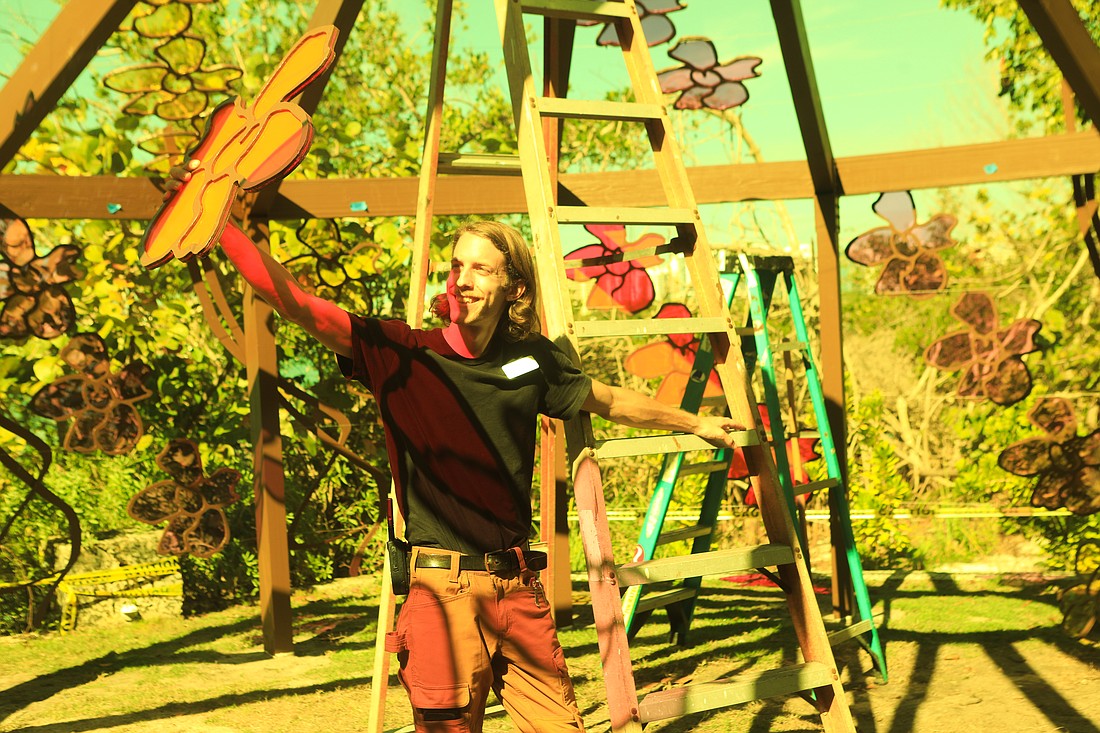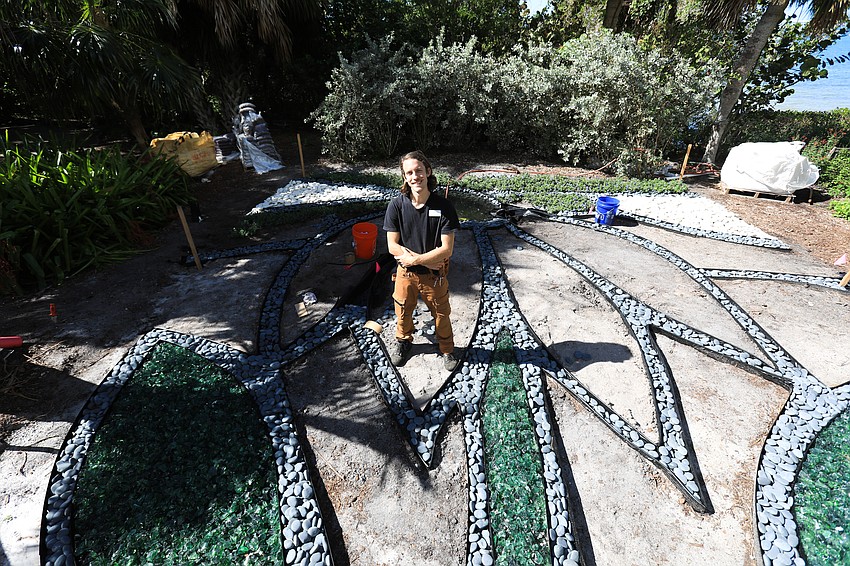- July 26, 2024
-
-
Loading

Loading

Marie Selby Botanical Gardens staff always want to maintain a point of view when debuting new exhibits.
The mantra for the Jean and Alfred Goldstein Exhibition Series — to examine master artists throughout history and highlight their relationship to nature — has led to creative and original approaches to bringing artwork into the gardens each year.
For their upcoming exhibit, the vision is clear. Staff are looking to take guests back in time and showcase a type of practical but beautiful stained glass and decorative arts not shown in the garden before.
The “Tiffany: The Pursuit of Beauty In Nature” exhibit, set to debut on Feb. 12, will highlight the many works of American artist and designer Louis Comfort Tiffany.
The stained glass artist and designer put out a number of revered art nouveau works — including intricate lamps, multicolored mosaics, patterned windows and more — in the late 19th and early 20th century, many of which will now be celebrated at the gardens.
“It’s (showcasing) the decorative arts at the turn of the 20th century by looking at glass with a connection to nature,” Chief Museum Curator David Berry says.
The exhibit’s work is not yet done, with many of the horticultural displays and museum designs still in progress, but the creative figures designing both sections are excited for guests to see what they have in store.
Nathan Burnaman, associate director of horticultural exhibits with Selby, has had an idea for one of many art installations that will fill Selby Gardens for the Tiffany showcase.

A mosaic of a wildflower dug right into the earth, with crushed glass and colored stone providing color. The outlines of the petals would be creeks with flowing water and the remaining space full of vibrant plant life to complete the image.
Burnaman felt it would be a union of nature and Tiffany’s style. Where the renowned artist used leading to create lines that delineated his colored glass, the Selby art piece would have streams of jetting water to create the shape of a wildflower.
A year ago, it was an idea. But now, standing in the middle of the installation, seeing the full design take shape and watching the various rivulets begin to fill with water, Burnaman feels a sense of pride.
“It’s super exciting in the beginning,” Bunaman says. “There’s infinite possibilities because we’re usually doing new things. It takes stretching your imaginations and looking for inspiration where you can find it.”
The Flowing Flower will be one of seven installations in the gardens that reflect Tiffany’s style and vision transformed into a tangible garden space.

Burnaman says he has been involved in the design process for the art installations from cradle to grave. That starts with generating ideas that will marry Tiffany’s stylings with the garden space, and then finding ways to make them work.
“We ask what makes the artist distinct?” Burnaman says. “We focus on those key elements and generate ideas that would be practical to execute … with the language of plants, sculpture and flowers. We’ll think of many ideas and whittle it down from there.”
Many are still works in progress and all require a good deal of work to execute.
The Living Lampshade, for example, is a vignette that Burnaman says is one of the garden’s biggest ever. Staff have constructed a gazebo that has been lined with orchid-shaped leaded-glass shades with vibrant green, red and blue colors. A garden will fill the interior with additional color.
When guests stand inside the gazebo (imitating a lamp shape) and the sun hits just right, they’ll find themselves surrounded by dazzling shades of colored light.
“(The gazebo) is a permitted structure,” Burnaman says. “It’s built to withstand armageddon.”
Color and light (and their relationships) are a common theme in many of the installations that will be seen at Selby this spring.

The Rooted in Nature section has the gardens’ massive Moreton Bay fig tree’s root area planted with more than 1,000 guzmania flowers of various colors to imitate Tiffany’s glass displays.
The Succulents in Silhouette piece that overlooks the succulent garden has a number of tall, colored panels that stretch color and light across the plant space.
As it is still leading up to the exhibit's debut, other installations are still underway. That suits Burnaman just fine.
“I usually have one favorite (installation),” Burnaman said. “This year, I have a lot of them.”
David Berry has been preparing the museum space for the new Tiffany exhibit for some time, and work really kicked into gear once the previous exhibit wrapped.
But during all this prep work, he’s been waiting for one moment — the first time a guest will walk inside the museum, stop, and take a look at a Tiffany lamp he placed ever so carefully.
It may seem like a small thing, but it’s much more than that to Berry. It will be proof that his team’s design of the museum’s walk-through has paid off.
“(It’s about) the object you placed in a particular place that just stops someone and they look,” Berry says. “That’s what it’s all ultimately about, when people make that connection. They have a better understanding of all this in the context of nature.”
The Tiffany exhibit’s museum segment will have guests entering and seeing a silhouetted display of glass designs meant to evoke Tiffany’s New York studio before walking through hallways and learning more about the artist and seeing his various lamps, mosaics and other designs. Much of the museum’s collection of glasswork was loaned from a private party.
Unlike some earlier exhibits that had a more open floor plan, the Tiffany exhibit has a guided style that Berry hopes will help guests better understand the artist’s life and style when working in interior design.
That approach has included putting in a new dividing wall in an opening room to give more of a walk-through experience.
“There’s something always in front of you, to your left or your right,” Berry says. “We want to capture the viewer’s (attention).”
Picking the types of artwork and details from Tiffany’s life — especially those that highlighted his relationship to nature — to adorn the new layout and gallery was another matter entirely.
“You have the artist and the artist's work, but what are the stories you’re going to tell?” Berry says. “We dive in as fully as we can … once we commit to an idea, then there’s the research to flesh it out.”
Berry feels he was well-versed in Tiffany’s work prior to the exhibit but says he’s now learned to recognize the sophistications that separate Tiffany’s glass work from other artists.
A Lotus Pogoda lamp, for example, has a water-lily inspired design with a delicate touch in its architecture and form through its leading that Berry has come to love.
But more than that is Berry’s respect for the artist’s emphasis on creating lamps, windows and other glass work that have real function to go along with the intricate aesthetics.
“With Tiffany, you have glass used for practical purposes at the highest level of craftsmanship and aesthetic quality with the windows and the lamps,” Berry says. “We can see it as fine art because it is, but they were sold with a practical purpose.”